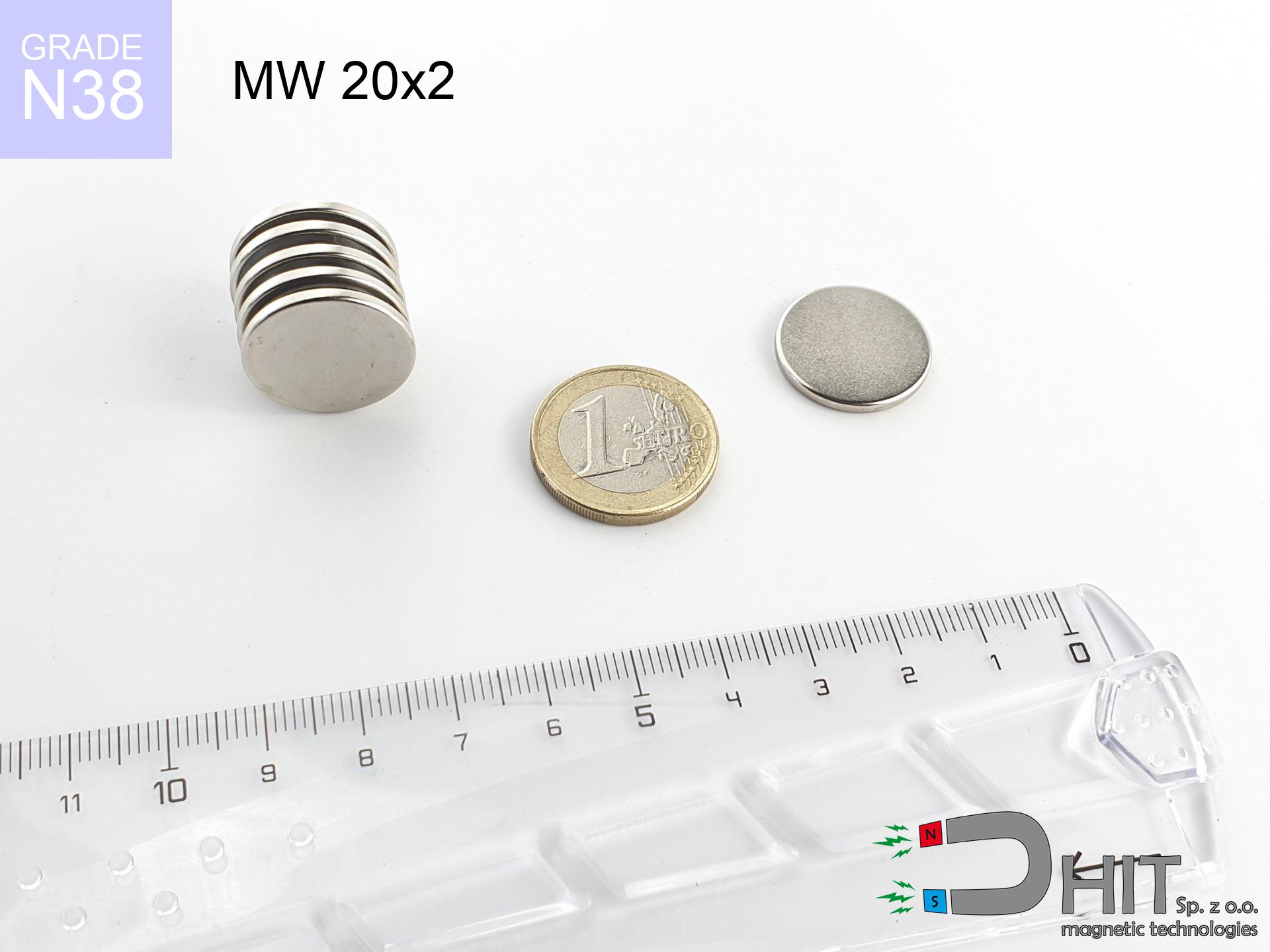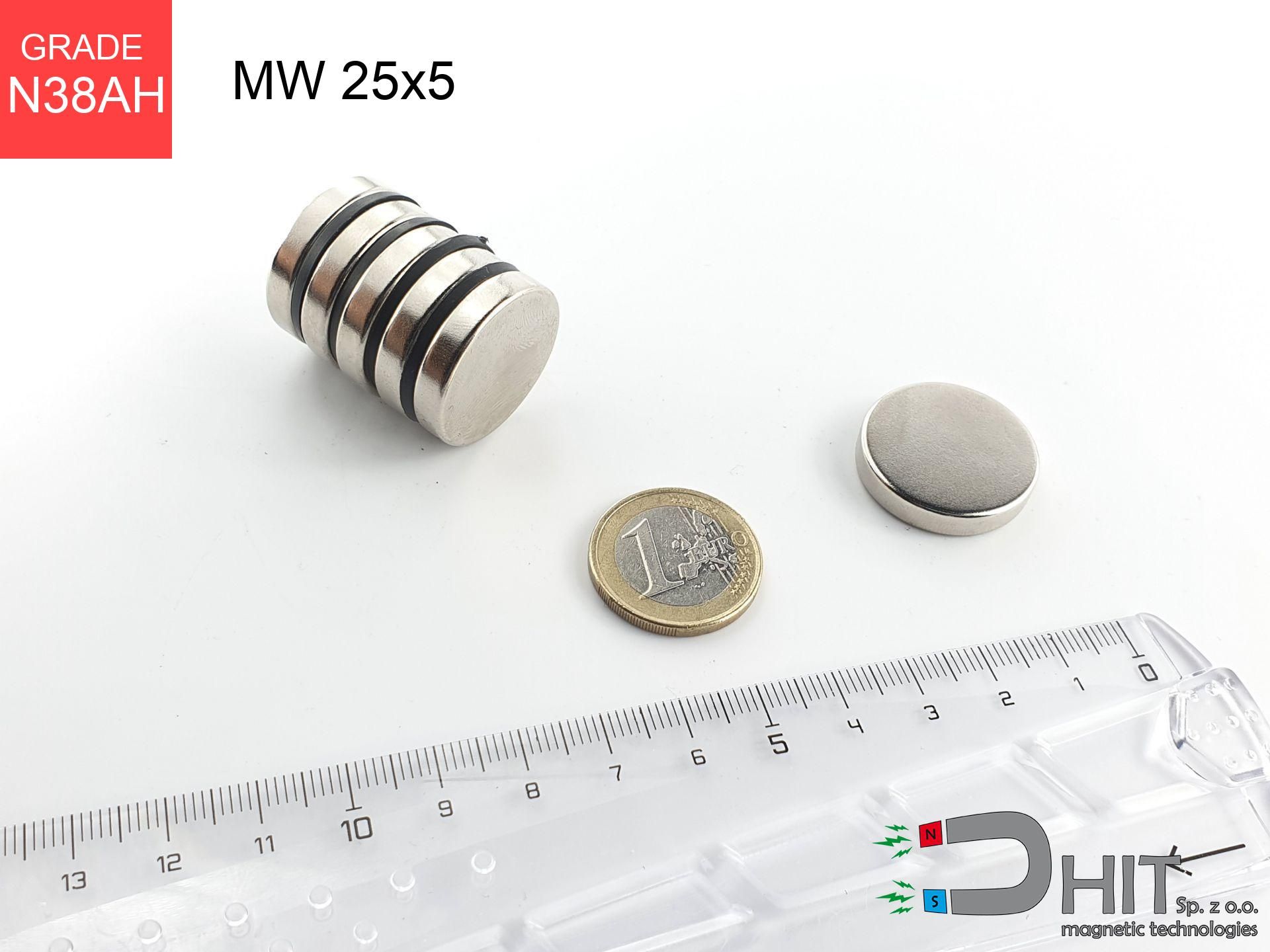SM 32x450 [2xM8] / N42 - magnetic separator
magnetic separator
Catalog no 130303
GTIN/EAN: 5906301812968
Diameter Ø
32 mm [±1 mm]
Height
450 mm [±1 mm]
Weight
2410 g
Magnetic Flux
~ 8 000 Gauss [±5%]
1340.70 ZŁ with VAT / pcs + price for transport
1090.00 ZŁ net + 23% VAT / pcs
bulk discounts:
Need more?
Pick up the phone and ask
+48 22 499 98 98
alternatively let us know using
our online form
our website.
Strength along with shape of a magnet can be calculated on our
magnetic calculator.
Order by 14:00 and we’ll ship today!
Technical of the product - SM 32x450 [2xM8] / N42 - magnetic separator
Specification / characteristics - SM 32x450 [2xM8] / N42 - magnetic separator
| properties | values |
|---|---|
| Cat. no. | 130303 |
| GTIN/EAN | 5906301812968 |
| Production/Distribution | Dhit sp. z o.o. |
| Country of origin | Poland / China / Germany |
| Customs code | 85059029 |
| Diameter Ø | 32 mm [±1 mm] |
| Height | 450 mm [±1 mm] |
| Weight | 2410 g |
| Material Type | Stainless steel AISI 304 / A2 |
| Magnetic Flux | ~ 8 000 Gauss [±5%] |
| Size/Mount Quantity | 2xM8 |
| Polarity | circumferential - 17 poles |
| Casing Tube Thickness | 1 mm |
| Manufacturing Tolerance | ±1 mm |
Magnetic properties of material N42
| properties | values | units |
|---|---|---|
| remenance Br [min. - max.] ? | 12.9-13.2 | kGs |
| remenance Br [min. - max.] ? | 1290-1320 | mT |
| coercivity bHc ? | 10.8-12.0 | kOe |
| coercivity bHc ? | 860-955 | kA/m |
| actual internal force iHc | ≥ 12 | kOe |
| actual internal force iHc | ≥ 955 | kA/m |
| energy density [min. - max.] ? | 40-42 | BH max MGOe |
| energy density [min. - max.] ? | 318-334 | BH max KJ/m |
| max. temperature ? | ≤ 80 | °C |
Physical properties of sintered neodymium magnets Nd2Fe14B at 20°C
| properties | values | units |
|---|---|---|
| Vickers hardness | ≥550 | Hv |
| Density | ≥7.4 | g/cm3 |
| Curie Temperature TC | 312 - 380 | °C |
| Curie Temperature TF | 593 - 716 | °F |
| Specific resistance | 150 | μΩ⋅cm |
| Bending strength | 250 | MPa |
| Compressive strength | 1000~1100 | MPa |
| Thermal expansion parallel (∥) to orientation (M) | (3-4) x 10-6 | °C-1 |
| Thermal expansion perpendicular (⊥) to orientation (M) | -(1-3) x 10-6 | °C-1 |
| Young's modulus | 1.7 x 104 | kg/mm² |
Table 1: Rod construction
SM 32x450 [2xM8] / N42
| Parameter | Value | Description / Unit |
|---|---|---|
| Diameter (Ø) | 32 | mm |
| Total length | 450 | mm (L) |
| Active length | 414 | mm |
| Section count | 18 | modules |
| Dead zone | 36 | mm (2x 18mm starter) |
| Weight (est.) | ~2751 | g |
| Active area | 416 | cm² (Area) |
| Housing material | AISI 304 | 1.4301 (Inox) |
| Surface finish | Ra < 0.8 µm | Polished |
| Temp. class | 80°C | Standard (N) |
| Force loss (at max °C) | -12.8% | Reversible loss (physics) |
| Force (calculated) | 26.2 | kg (theor.) |
| Induction (surface) | ~8 000 | Gauss (Max) |
Chart 2: Field profile (18 sections)
Chart 3: Temperature performance
Elemental analysis
| iron (Fe) | 64% – 68% |
| neodymium (Nd) | 29% – 32% |
| boron (B) | 1.1% – 1.2% |
| dysprosium (Dy) | 0.5% – 2.0% |
| coating (Ni-Cu-Ni) | < 0.05% |
Sustainability
| recyclability (EoL) | 100% |
| recycled raw materials | ~10% (pre-cons) |
| carbon footprint | low / zredukowany |
| waste code (EWC) | 16 02 16 |
Other deals
Pros and cons of rare earth magnets.
Pros
- They virtually do not lose strength, because even after ten years the decline in efficiency is only ~1% (according to literature),
- They are resistant to demagnetization induced by external magnetic fields,
- By using a reflective layer of silver, the element acquires an proper look,
- Magnets have very high magnetic induction on the outer side,
- Thanks to resistance to high temperature, they are able to function (depending on the form) even at temperatures up to 230°C and higher...
- Thanks to the possibility of precise shaping and customization to individualized requirements, magnetic components can be manufactured in a variety of forms and dimensions, which increases their versatility,
- Wide application in high-tech industry – they serve a role in mass storage devices, drive modules, diagnostic systems, also multitasking production systems.
- Relatively small size with high pulling force – neodymium magnets offer strong magnetic field in compact dimensions, which allows their use in miniature devices
Limitations
- Susceptibility to cracking is one of their disadvantages. Upon strong impact they can break. We advise keeping them in a strong case, which not only protects them against impacts but also increases their durability
- We warn that neodymium magnets can lose their power at high temperatures. To prevent this, we advise our specialized [AH] magnets, which work effectively even at 230°C.
- They rust in a humid environment - during use outdoors we advise using waterproof magnets e.g. in rubber, plastic
- We suggest cover - magnetic mechanism, due to difficulties in creating threads inside the magnet and complex forms.
- Potential hazard related to microscopic parts of magnets are risky, when accidentally swallowed, which is particularly important in the context of child safety. Furthermore, small elements of these magnets can complicate diagnosis medical in case of swallowing.
- High unit price – neodymium magnets have a higher price than other types of magnets (e.g. ferrite), which increases costs of application in large quantities
Holding force characteristics
Maximum lifting capacity of the magnet – what affects it?
- on a base made of structural steel, effectively closing the magnetic flux
- possessing a massiveness of at least 10 mm to avoid saturation
- characterized by lack of roughness
- without any insulating layer between the magnet and steel
- during detachment in a direction perpendicular to the plane
- at conditions approx. 20°C
Practical lifting capacity: influencing factors
- Distance – existence of any layer (paint, tape, air) interrupts the magnetic circuit, which lowers capacity rapidly (even by 50% at 0.5 mm).
- Angle of force application – maximum parameter is reached only during pulling at a 90° angle. The force required to slide of the magnet along the plate is standardly several times lower (approx. 1/5 of the lifting capacity).
- Metal thickness – the thinner the sheet, the weaker the hold. Part of the magnetic field passes through the material instead of converting into lifting capacity.
- Material type – the best choice is high-permeability steel. Hardened steels may generate lower lifting capacity.
- Surface finish – ideal contact is possible only on polished steel. Any scratches and bumps create air cushions, reducing force.
- Thermal factor – high temperature reduces magnetic field. Too high temperature can permanently demagnetize the magnet.
Lifting capacity testing was performed on a smooth plate of suitable thickness, under a perpendicular pulling force, whereas under shearing force the lifting capacity is smaller. In addition, even a small distance between the magnet and the plate lowers the load capacity.
Warnings
Protective goggles
Watch out for shards. Magnets can explode upon violent connection, ejecting shards into the air. Eye protection is mandatory.
Conscious usage
Handle magnets with awareness. Their huge power can surprise even experienced users. Be vigilant and do not underestimate their power.
Threat to electronics
Avoid bringing magnets near a wallet, computer, or screen. The magnetism can irreversibly ruin these devices and wipe information from cards.
Crushing force
Mind your fingers. Two powerful magnets will snap together instantly with a force of massive weight, destroying everything in their path. Exercise extreme caution!
Avoid contact if allergic
Medical facts indicate that nickel (standard magnet coating) is a common allergen. If you have an allergy, avoid direct skin contact and select versions in plastic housing.
Implant safety
Health Alert: Strong magnets can turn off heart devices and defibrillators. Do not approach if you have medical devices.
Compass and GPS
Remember: rare earth magnets produce a field that interferes with precision electronics. Keep a separation from your mobile, tablet, and navigation systems.
This is not a toy
Product intended for adults. Small elements pose a choking risk, causing intestinal necrosis. Keep out of reach of kids and pets.
Machining danger
Fire warning: Rare earth powder is explosive. Do not process magnets in home conditions as this risks ignition.
Heat sensitivity
Do not overheat. Neodymium magnets are susceptible to heat. If you require operation above 80°C, look for HT versions (H, SH, UH).

![Separation magnetic rod SM 32x450 [2xM8] / N42 Separation magnetic rod SM 32x450 [2xM8] / N42](https://cdn3.dhit.pl/graphics/banners/magnet.webp)
![SM 32x450 [2xM8] / N42 - magnetic separator](https://cdn3.dhit.pl/graphics/products/sm-32x450-2xm8-bex.jpg)


![UMGGW 22x6 [M4] GW / N38 - magnetic holder rubber internal thread UMGGW 22x6 [M4] GW / N38 - magnetic holder rubber internal thread](https://cdn3.dhit.pl/graphics/products/umg-22x6-m4-gw-jek.jpg)


